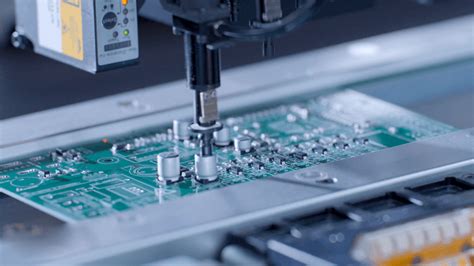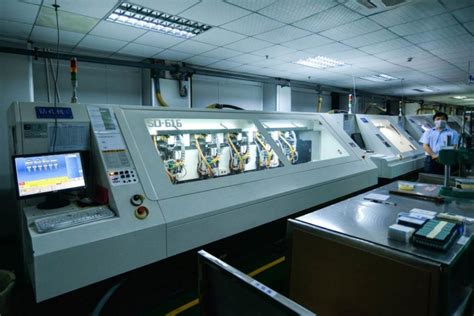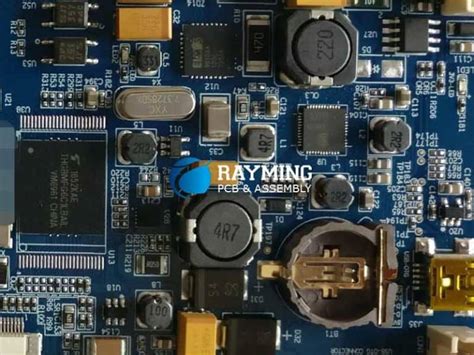Mastering Altium for Efficient Multiboard Assembly Solutions
Key Takeaways
In mastering Altium for multiboard assembly, a few essential insights stand out. Firstly, understanding the intricacies of pcb assembly is crucial. Effective management of complex designs starts with clear organization and strategy, which can significantly enhance the efficiency of pcba workflows. Teams should prioritize maintaining open lines of communication to foster collaboration, ensuring that all members are aligned on project goals and timelines. Utilizing the native features of Altium, such as version control and integrated documentation tools, can streamline the design process and help tackle potential issues before they escalate. Additionally, adopting a systematic approach to iteration allows for smoother transitions during design phases, ultimately leading to reduced time in production cycles. Emphasis on keeping documentation current not only aids in troubleshooting common challenges but also supports teams in navigating the rapidly evolving landscape of multiboard assembly solutions. These key strategies highlight both the importance of utilizing robust software tools like Altium and embracing collaborative mindsets for achieving optimal results in pcba projects.
Introduction to Altium in Multiboard Assembly
In the realm of multiboard assembly, mastering Altium is paramount for achieving seamless integration and efficiency. As technology evolves, the complexity of electronic designs has increased, necessitating an adept approach to pcb assembly or pcba. Utilizing Altium for multiboard projects allows designers to manage not only individual boards but also the interconnections and functionalities between them.
With its robust features, Altium provides a structured environment that enhances the design workflow. Users can simplify their projects by employing tools that support automatic updates and conflict resolution. This capability is invaluable when dealing with multiple boards, where changes in one area can cascade through the entire assembly.
Effective collaboration among design teams is critical in this context. By leveraging Altium’s cloud-based solutions, team members can work concurrently on designs, facilitating real-time feedback and adjustments. This collaborative effort can lead to more innovative solutions and a faster time-to-market.
Moreover, regular training on best practices enables teams to stay abreast of new tools and methodologies within the Altium ecosystem. This continued education often results in reduced errors during assembly and optimization of designs that adhere to industry standards.
Tips for Implementation
“Invest time upfront in understanding Altium’s features; it pays off manifold during assembly phases.”
In summary, adopting a thorough knowledge of Altium not only enhances individual design expertise but also cultivates a culture of collaboration that is essential for successful multiboard assembly projects.
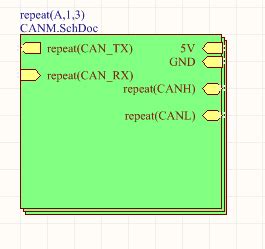
Best Practices for Optimizing Multiboard Designs
When it comes to pcb assembly in complex multiboard designs, implementing effective strategies is crucial for success. One key practice is to prioritize modularization within your designs, which allows for easier troubleshooting and upgrades. By breaking down the overall design into smaller, manageable sections, you not only enhance design clarity but also improve collaboration among team members. Another vital aspect is the utilization of design templates that can streamline the pcba process, ensuring consistency and reducing the likelihood of errors. Leveraging a robust version control system is also essential; it ensures that all team members are working with the most current files and mitigates the risk of miscommunication.
Furthermore, fostering an environment that encourages open feedback can significantly enhance both design quality and team performance. Regular design reviews can help identify potential issues early in the process, making it easier to implement corrections before they escalate into more complex problems. Lastly, understanding and utilizing the unique features of Altium—such as its advanced simulation tools—can greatly assist in optimizing designs for efficiency. Adopting these best practices will lead to more effective multiboard assembly, ensuring your projects are both timely and accurate in execution.

Enhancing Collaboration Among Design Teams
Effective collaboration among design teams is paramount in the pcb assembly process, especially in complex pcba projects involving multiple boards. Utilizing tools within Altium, teams can share designs seamlessly, fostering an environment where feedback is not only encouraged but also integrated in real time. This interactive platform allows for the simultaneous review of layouts, enabling members to identify potential issues early in the design phase, thus reducing the need for revisions later. Furthermore, implementing a centralized repository for design files enhances transparency, ensuring that all team members are on the same page regarding project status and requirements. As a result, this collaborative approach minimizes miscommunication and accelerates the overall workflow. By establishing regular check-ins and utilizing features such as live chat or comments directly on designs, teams can maintain alignment and adapt quickly to project changes. Ultimately, enhancing collaboration through these strategies not only supports efficient multiboard assembly but also leads to higher quality outcomes in pcba projects.
Techniques for Efficient Workflow Management
Efficient workflow management is crucial in multiboard assembly, particularly when dealing with the complexities of pcb assembly and its associated challenges. Prioritizing a streamlined approach involves establishing a clear framework for project execution, allowing design teams to navigate between various stages of development effectively. Implementing robust version control systems ensures that all members have access to the latest updates, which is essential for avoiding miscommunication during the pcba process. Additionally, utilizing Altium’s automation features can significantly reduce repetitive tasks, freeing up time for more critical design elements. Incorporating collaborative tools within Altium allows teams to engage and share insights in real time, fostering an environment where feedback can lead to improved designs. Regular evaluations of team roles and assignments also enhance productivity by aligning skills with project needs. By focusing on these techniques, teams can manage their workflows more effectively, ultimately leading to the successful execution of complex multiboard projects while maximizing overall efficiency.
Troubleshooting Common Challenges in Multiboard Assembly
In the realm of multiboard assembly, encountering challenges is almost inevitable. However, by understanding and addressing these issues proactively, teams can enhance their pcb assembly processes. One common challenge is ensuring effective communication among design teams, which can lead to misunderstandings and errors in pcba layouts. To mitigate this, establishing a clear communication protocol that outlines responsibilities and deadlines can significantly improve collaboration. Additionally, managing component placement effectively across multiple boards is crucial; poor placement can lead to increased production costs and delays. Utilizing the features of Altium, such as its integrated design rule checks, helps in identifying potential issues early on in the design phase. Furthermore, keeping track of version control is essential to ensure all team members are working on the most current designs; implementing automated versioning tools within Altium can streamline this process. By forecasting these challenges and leveraging appropriate solutions within Altium’s robust capabilities, teams can foster a more efficient workflow and minimized errors in their multiboard assembly projects.
Leveraging Altium Features for Complex Projects
In the realm of multiboard assembly, effective use of Altium can significantly enhance project outcomes. By utilizing advanced features within the software, design teams can streamline their processes and improve overall efficiency. One key aspect is the ability to conduct real-time collaboration, which allows multiple team members to work on different components of the same PCB assembly simultaneously. This not only accelerates the design timeline but also reduces the possibility of errors that commonly occur when files are passed back and forth. Additionally, Altium’s robust schematic capture and layout tools enable designers to visualize complex interconnections across boards, thereby simplifying routing tasks that are critical in pcba processes. The software’s support for automated annotations and design rule checks further empowers teams to eliminate potential pitfalls early in the design phase. Leveraging these sophisticated tools can lead to a more organized approach in handling large-scale projects and ensure that intricate requirements are met without compromising design integrity or timeline constraints.
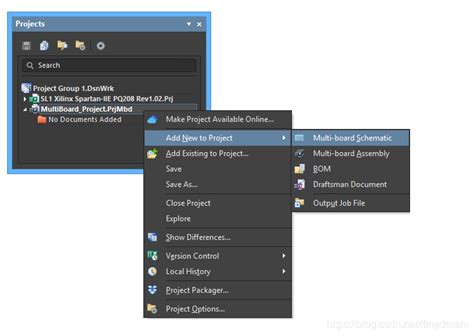
Case Studies: Successful Multiboard Assemblies Using Altium
In the realm of pcb assembly, the integration of Altium into multiboard projects has led to notable advancements in design efficiency and product reliability. Several case studies illustrate how teams have leveraged Altium’s robust features to address complex requirements in their pcba processes. For instance, a leading electronics manufacturer successfully utilized Altium to streamline their design-to-production workflow, which reduced time-to-market by approximately 30%. By employing enhanced collaborative tools within Altium, designers were able to work simultaneously on various board layouts, thereby minimizing errors and ensuring consistent communication throughout the project lifecycle. Another remarkable case involved a multinational corporation that utilized Altium’s simulation tools for thermal management in high-density multiboard assemblies. This proactive approach not only improved heat dissipation but also optimized the overall pcba performance, resulting in higher product durability under severe operating conditions. These examples underscore the critical role that effective software solutions like Altium play in achieving successful outcomes in modern pcb assembly initiatives, ultimately enabling organizations to meet escalating market demands while maintaining high standards of quality and innovation.
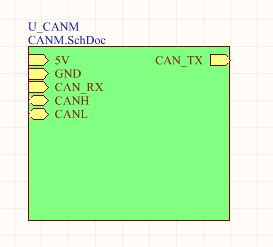
Future Trends in Multiboard Assembly Solutions
As the field of pcb assembly evolves, several key trends are shaping the future of multiboard assembly solutions. One notable trend is the integration of advanced automation processes that facilitate pcba efficiency. Automating repetitive tasks not only reduces human error but also enhances productivity, allowing design teams to focus on more innovative aspects of their projects. Additionally, the rise of artificial intelligence and machine learning technologies is paving the way for smarter design tools that can predict potential issues before they arise. This proactive approach is essential for managing complexity in multiboard designs. Furthermore, an increasing emphasis on sustainable practices in pcb assembly is driving organizations to adopt eco-friendly materials and techniques that reduce waste and energy consumption. This trend aligns with global efforts toward environmental responsibility and can significantly impact how future projects are executed. Moreover, the collaboration across multidisciplinary teams is becoming more crucial as products grow in complexity; fostering stronger partnerships can yield designs that are not only innovative but also feasible for pcba production. Keeping an eye on these trends will help professionals stay ahead in the competitive landscape of multiboard assembly solutions while meeting the evolving demands of industry standards.
Conclusion
In summary, mastering Altium for multiboard assembly is essential for engineers striving to enhance their design processes. By integrating the right practices and leveraging the powerful features of Altium, teams can significantly optimize their workflows and increase efficiency. Emphasizing smooth communication and collaboration among team members is non-negotiable, especially when dealing with complex designs and pcb assembly projects. The shared insights from successful case studies demonstrate that employing advanced techniques can not only troubleshoot common challenges in pcba but also streamline the entire assembly process. As technology continues to evolve, keeping an eye on future trends in multiboard assembly solutions will empower teams to further innovate and remain competitive in this dynamic field. Building on these principles will ensure that organizations are well-equipped to tackle the complexities of modern pcb assembly, leading to high-quality outputs that meet industry standards.
FAQs
What is the significance of pcb assembly in multiboard projects?
The significance of pcb assembly in multiboard projects lies in its ability to streamline the manufacturing process. Effective pcba techniques ensure that the boards are integrated smoothly, enhancing overall functionality and reducing errors during assembly.
How can I optimize my pcba workflows using Altium?
To optimize your pcba workflows in Altium, consider utilizing its advanced features such as design reusability and automated routing. These tools can significantly reduce the time spent on repetitive tasks while improving accuracy.
What common challenges should I be aware of in multiboard assemblies?
Common challenges in multiboard assemblies include alignment issues, signal integrity problems, and thermal management concerns. Addressing these factors early in the design phase with Altium can lead to more successful outcomes.
How does enhanced collaboration benefit my design team?
Enhanced collaboration allows team members to share insights and feedback instantly. Using features within Altium, such as real-time updates and version control, can elevate teamwork, leading to more innovative solutions.
Can I implement best practices for future-proofing my pcb assembly designs?
Yes, implementing best practices such as modular design and standardized components will help future-proof your pcb assembly designs. This approach not only ensures ease of updates but also accommodates new technologies effortlessly.



